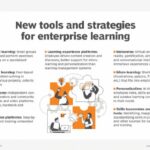The Build-Measure-Learn feedback loop is a crucial framework for entrepreneurs navigating the uncertainties of a startup. This iterative process allows for rapid experimentation, validated learning, and informed decision-making, ultimately increasing the chances of success. This article explores how this powerful tool empowers entrepreneurs to build thriving businesses.
Understanding the Foundation: Leap-of-Faith Assumptions
Every startup begins with assumptions: the belief that a product or service will resonate with customers and generate sustainable growth. These are the Value Hypothesis and the Growth Hypothesis, respectively. The Build-Measure-Learn loop is designed to test these fundamental assumptions.
The Value Hypothesis: Delivering Customer Benefit
This hypothesis centers around the value proposition: does the product or service solve a customer problem or fulfill a need effectively enough to justify purchasing it? The stronger the benefit provided, the greater the perceived value.
The Growth Hypothesis: Achieving Sustainable Expansion
This hypothesis focuses on how the business will attract and retain customers over time. Various growth models exist, including sticky (high retention), paid (advertising-driven), and viral (word-of-mouth). Understanding which model applies to your startup is crucial for designing effective growth experiments.
Caution: Even rapidly growing companies can misinterpret the drivers of their success. It’s essential to clearly identify the Growth Hypothesis to conduct meaningful experiments and avoid costly missteps.
The Build-Measure-Learn Cycle in Action
This cyclical process systematically tests the core assumptions of a startup, providing evidence-based insights to guide development.
Build: Creating the Minimum Viable Product (MVP)
The Build phase involves creating a Minimum Viable Product (MVP) – a stripped-down version of the product designed to test the riskiest assumptions with minimal effort and development time. The MVP should allow for data collection and customer interaction, enabling a full cycle of the loop.
Prioritize testing the most critical assumptions first. If these prove invalid, addressing less critical issues becomes irrelevant. Each MVP should be designed with a specific actionable metric and hypothesis in mind.
Measure: Gathering Actionable Data
The Measure phase focuses on gathering data from customer interactions with the MVP. This requires using actionable metrics that provide insights into customer behavior and progress towards key goals. Testing one change at a time allows for clear attribution of cause and effect, enabling accurate learning.
Learn: Validating Assumptions and Driving Iteration
The Learn phase analyzes the collected data, comparing it to the initial hypothesis. This is where validated learning occurs – confirming or refuting assumptions based on real-world evidence. This process reveals which elements of the strategy are working, identifies target customers, and clarifies customer needs.
Validated learning confirms that development efforts are driving meaningful progress. If the data supports the hypothesis, the cycle continues with further refinement. If not, a pivot – a significant change in strategy – may be necessary.
The Iterative Process: A Virtuous Cycle
The Build-Measure-Learn loop is a continuous process. Based on the learnings from each cycle, the entrepreneur refines the hypothesis, identifies new learning objectives, defines relevant metrics, and builds the next iteration of the product. This iterative cycle accelerates learning and reduces the risk of wasted effort.
Innovation Accounting: Measuring Progress Objectively
Innovation accounting uses quantifiable milestones to track progress and guide decision-making. This data-driven approach relies on actionable metrics, avoiding misleading vanity metrics that don’t provide insights into actual progress. Key milestones include:
- Minimum Viable Product (MVP): Establishes a baseline for measuring progress.
- Engine Tuning: Iterative improvements based on validated learning, moving the startup closer to its ideal metrics.
- Pivot or Persevere: The decision point where the data dictates either continuing on the current path or making a significant strategic change (pivot).
Actionable vs. Vanity Metrics: Focusing on What Matters
Actionable metrics, such as registration rates, customer lifetime value, and repeat usage, provide insights into customer behavior and drive informed decisions. Vanity metrics, like total website visits, may appear impressive but lack the substance to guide meaningful development.
The Pivotal Decision: Pivot or Persevere
The Build-Measure-Learn loop culminates in the critical decision: pivot or persevere. If the data invalidates key assumptions, a pivot is necessary – a strategic shift based on the learnings. Early pivots are more efficient, minimizing wasted resources. As the loop accelerates, decisions happen faster, leading to rapid learning and adaptation.
References
- Ries, E. (2011). The Lean Startup. Crown Business.
- Guillebeau, C. (2012). The $100 Startup. Crown Business.
!(build-measure-learn-feedback-loop.jpg)

